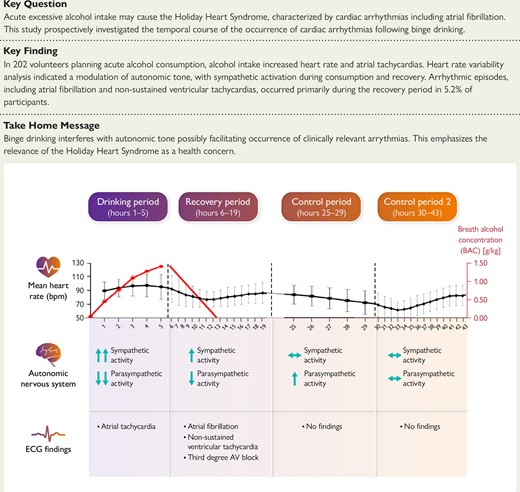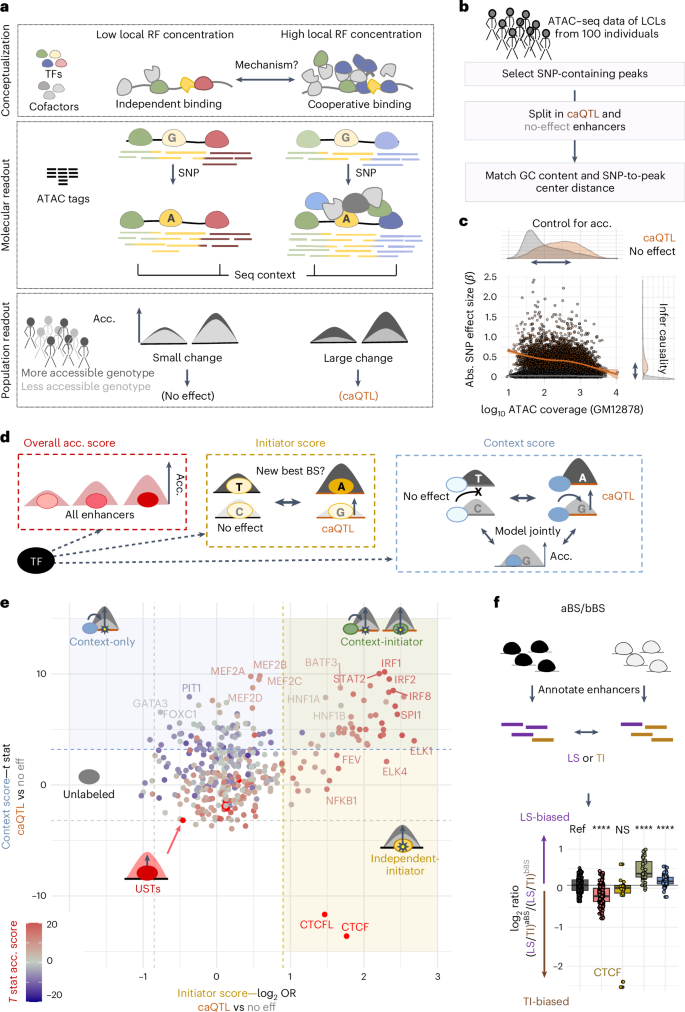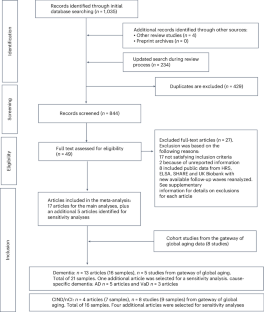2024-10-08 ミュンヘン大学(LMU)
<関連情報>
- https://www.lmu.de/en/newsroom/news-overview/news/arrhythmic-hearts-after-excessive-alcohol-consumption.html
- https://academic.oup.com/eurheartj/advance-article/doi/10.1093/eurheartj/ehae695/7809582
若年成人における急性アルコール摂取と不整脈: ミュンヘンBREW II研究 Acute Alcohol Consumption and Arrhythmias in Young Adults: The MunichBREW II Study
Stefan Brunner, M.D, Christina Krewitz, M.D, Raphaela Winter, M.D, Aenne S von Falkenhausen, M.D, Anna Kern, M.D., M.Sc, Dorothee Brunner, R.N, Moritz F Sinner, M.D., M.P.H
European Heart Journal Published:04 October 2024
DOI:https://doi.org/10.1093/eurheartj/ehae695

Graphical Abstract
Abstract
Background
and aims: Acute excessive alcohol intake may cause the holiday heart syndrome, characterized by cardiac arrhythmias including atrial fibrillation. Since underlying data are scarce, the study aimed to prospectively investigate the temporal course of occurring cardiac arrhythmias following binge drinking in young adults.
Methods
A total of 202 volunteers planning acute alcohol consumption with expected peak breath alcohol concentrations (BAC) of ≥1.2 g/kg were enrolled. The study comprised 48-hour electrocardiogram (ECG) monitoring covering baseline (hour 0), ‘drinking period’ (hours 1-5), ‘recovery period’ (hours 6-19), and two control periods corresponding to 24 hours after the ‘drinking’ and ‘recovery periods’, respectively. Acute alcohol intake was monitored by BAC measurements during the ‘drinking period’. ECGs were analyzed for mean heart rate, atrial tachycardia, premature atrial complexes (PAC), premature ventricular complexes (PVC), and heart rate variability (HRV) measures.
Results
Data revealed an increase in heart rate and an excess of atrial tachycardias with increasing alcohol intake. HRV analysis indicated an autonomic modulation with sympathetic activation during alcohol consumption and the subsequent ‘recovery period’, followed by parasympathetic predominance thereafter. PACs occurred significantly more frequently in the ‘control periods’, whereas PVCs were more frequent in the ‘drinking period’. Ten participants experienced notable arrhythmic episodes, including atrial fibrillation and ventricular tachycardias, primarily during the ‘recovery period’.
Conclusions
The study demonstrates the impact of binge drinking on heart rate alterations and increased atrial tachycardias during ‘drinking period’, and the occurrence of clinically relevant arrythmias during the ‘recovery period’, emphasizing the holiday heart syndrome as a health concern.


